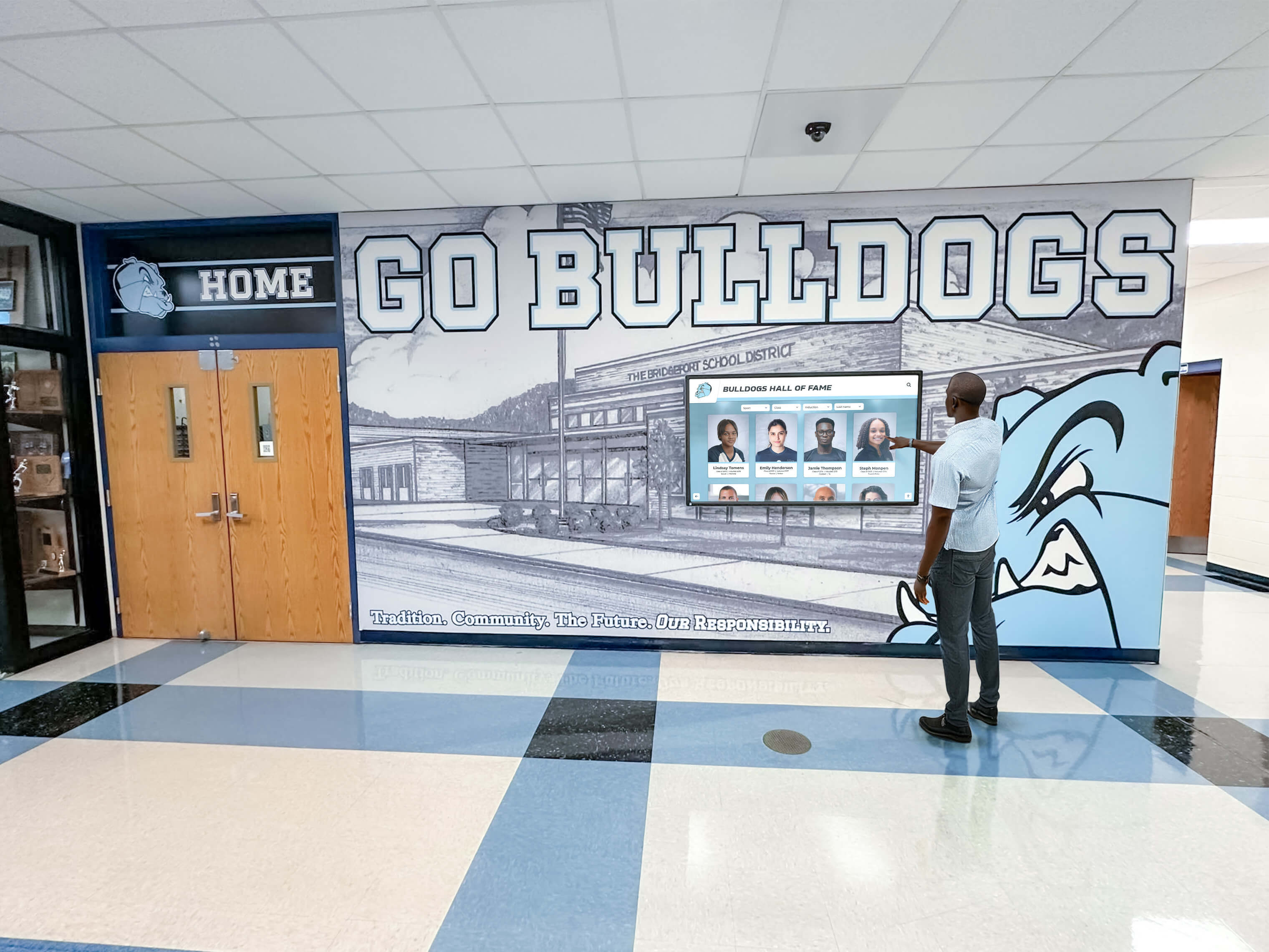Key Takeaways
Discover how high schools can prepare for and maximize college coach visits. Learn strategies for showcasing athletes, organizing facilities, and building relationships that benefit your recruiting program.
The Changing Landscape of College Coach Visits
The college recruiting environment has evolved significantly over the past decade, fundamentally changing how coaches identify and evaluate high school talent.
The Decline in Traditional School Visits
College coach visits to high schools have decreased substantially in recent years. According to reports from high school athletic directors, schools that previously hosted 75+ college coaches annually now may see fewer than 10 visits per recruiting cycle. Several factors drive this trend.
Transfer Portal Priority: The NCAA transfer portal has transformed college recruiting, with coaches dedicating significant time and resources to evaluating transfer prospects who can contribute immediately. This shift reduces time available for traditional high school recruiting visits.
Regional vs. Positional Recruiting: Many programs have moved from regional recruiters who visited all schools in geographic areas to position-specific recruiters who focus narrowly on athletes at their positions. This specialization means fewer coaches visit individual schools, though visits may be more targeted.
Showcase Event Emphasis: College coaches increasingly concentrate evaluation efforts at centralized showcase events, camps, and tournaments where they can assess multiple prospects efficiently rather than visiting individual schools scattered across regions.
Digital Evaluation Tools: Advanced video analysis technology, recruiting databases, and digital communication platforms enable coaches to evaluate talent remotely, reducing the necessity of in-person school visits for initial talent identification.
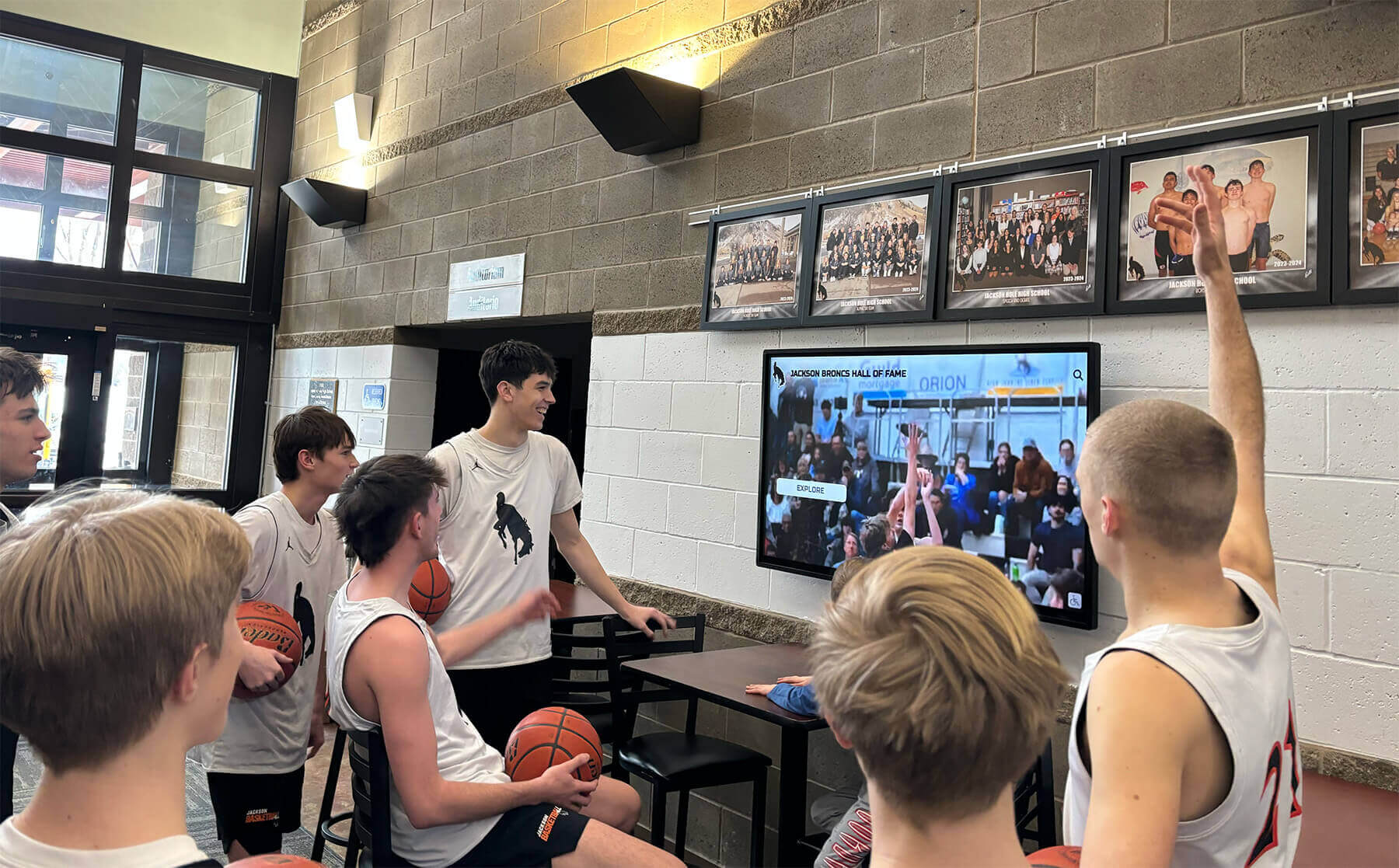
High School Responses to Declining Visits
Forward-thinking high schools have adapted to this changing environment by creating new opportunities to connect athletes with college coaches.
Organized Showcase Events: Many conferences and regions now host collective showcase days where dozens of college coaches attend centralized events to evaluate talent from multiple schools simultaneously. These events provide more efficient evaluation opportunities than individual school visits.
Enhanced Digital Presence: High schools invest in professional highlight videos, comprehensive athlete profiles, and robust social media presence to ensure college coaches can evaluate talent remotely when in-person visits aren’t possible.
Proactive Communication: Athletic directors and coaches maintain regular contact with college recruiters, sharing updates about athlete development, season highlights, and achievement milestones that keep their programs top-of-mind.
Facility and Recognition Enhancements: Schools create impressive athletic facilities and comprehensive recognition displays that showcase program quality, making their campuses attractive destinations when coaches do visit.
Understanding NCAA Recruiting Calendar Rules
College coaches must follow strict NCAA recruiting calendar regulations that govern when and how they can visit high schools and evaluate prospects.
Contact vs. Evaluation Periods: During Contact Periods, coaches can visit schools, speak directly with athletes, and conduct off-campus evaluations. During Evaluation Periods, coaches can attend competitions and visit schools but cannot have face-to-face conversations with prospects off-campus.
Dead Periods: No in-person contact or evaluation occurs during Dead Periods, though coaches can communicate via phone, email, and text according to sport-specific rules.
Sport-Specific Variations: Each sport has unique recruiting calendar periods. Football has distinct early and late signing periods. Basketball follows different evaluation timelines. Understanding your sport’s specific calendar helps schools prepare for when coaches are most likely to visit.
Preparing Your Athletic Program for Coach Visits
High schools that systematically prepare for college coach visits create environments where coaches can efficiently evaluate talent while gaining positive impressions of program quality.
Facility Organization and Presentation
First impressions matter significantly when college coaches visit your campus. Well-organized, professionally maintained facilities signal institutional commitment to athletics.
Athletic Spaces Should Include:
Clean, well-lit locker rooms that demonstrate respect for student-athletes, organized equipment storage showing program professionalism, updated training facilities with modern strength and conditioning equipment, maintained playing surfaces and practice areas in good condition, and visible achievement recognition celebrating program success.
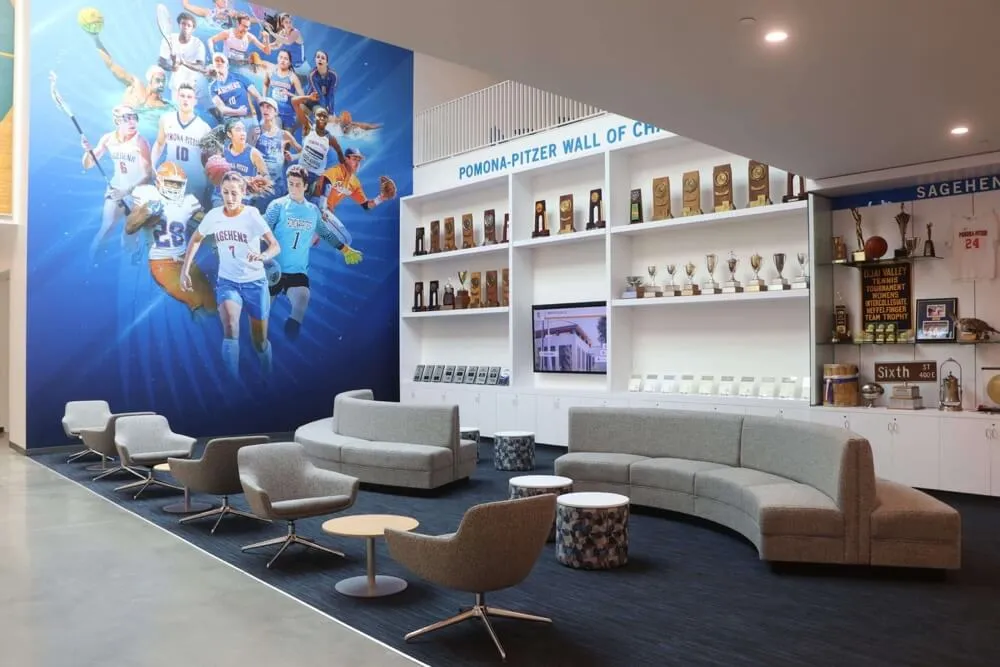
Professional facility presentation communicates that your program develops athletes in environments conducive to excellence—an important factor coaches consider when evaluating which high school programs consistently produce college-ready athletes.
Creating Comprehensive Athlete Information
College coaches visiting schools need immediate access to detailed information about prospects they’re evaluating. Prepare comprehensive packages including:
Essential Athlete Information:
- Complete academic profile (GPA, test scores, academic honors)
- Athletic statistics and measurables (height, weight, speed, position-specific metrics)
- Season and career highlights with video links
- Contact information for athletes and families
- Club/travel team affiliations and coaches
- Character references from teachers and coaches
- Post-season honors and all-conference selections
Video Highlight Organization: Maintain updated highlight reels for each athlete, organized by sport and position. Video should show athletes in competitive game situations demonstrating skills coaches evaluate—not just successful plays but how athletes perform in various circumstances.
Digital Accessibility: Host athlete information on easily accessible platforms. Coaches should be able to review complete athlete profiles from mobile devices during or after visits. Many successful programs maintain private recruiting websites specifically for college coach access.
Staff Preparation and Coordination
Ensure coaching staff and athletic administrators understand their roles during college coach visits.
Designate Point of Contact: Assign specific individuals responsible for coordinating coach visits—typically the athletic director or head coach in the relevant sport. This person should respond promptly to visit requests, coordinate scheduling, and facilitate smooth visit experiences.
Communication Protocols: Establish clear internal communication about expected coach visits. When coaches schedule visits, inform relevant staff including head coaches who should be available, assistant coaches who might provide specific player insights, athletic trainers who can discuss athlete health and development, and facility staff ensuring spaces are accessible and presentable.
Schedule Flexibility: College coaches often operate on tight schedules visiting multiple schools in single days. Accommodate their timing preferences whenever possible, recognizing that flexibility increases likelihood of visits occurring.
Maximizing the Value of Coach Visits
When college coaches do visit your school, strategic approaches maximize the benefit for both coaches and your student-athletes.
Organized Athlete Presentations
Rather than informal conversations, consider structured presentations that efficiently showcase your athletes to visiting coaches.
Film Session Format: Host 30-45 minute film sessions where coaches can watch highlight reels of multiple prospects while you provide context about each athlete’s development, character, and potential. This format allows coaches to evaluate several athletes quickly while gaining insights beyond what film alone provides.
Athlete Availability: When possible and appropriate according to recruiting rules, arrange for coaches to meet briefly with prospects they’re evaluating. These interactions allow coaches to assess athlete personality, communication skills, and genuine interest in their programs.
Practice Observation: If coach visits coincide with practice times and recruiting rules permit, invite them to observe. Seeing athletes practice provides evaluation opportunities beyond game film—how they respond to coaching, interact with teammates, and approach skill development.
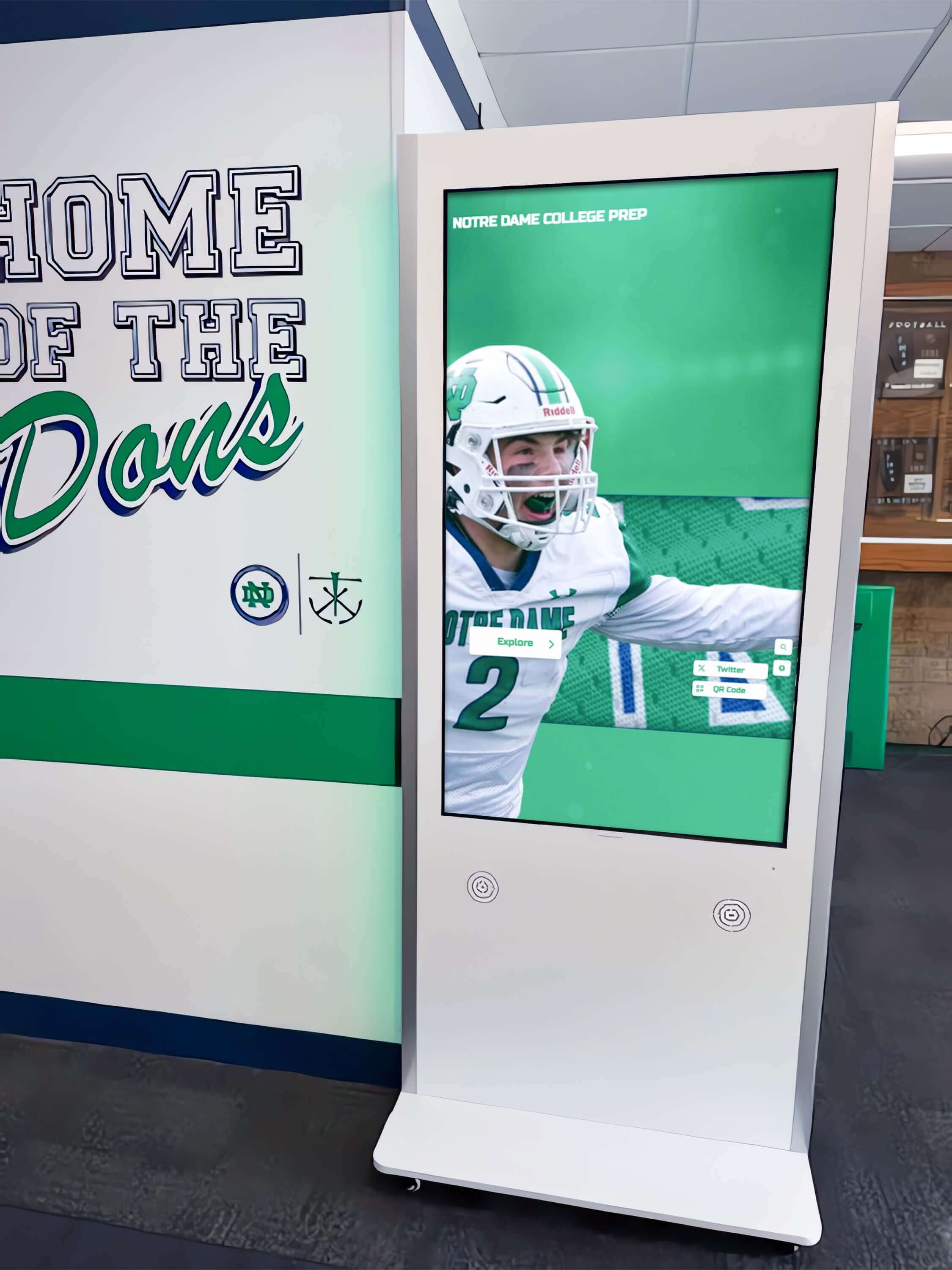
Showcasing Program Culture and Development
College coaches evaluate more than just individual athletes—they assess whether high school programs consistently develop college-ready players who understand commitment, competition, and character.
Achievement Documentation: Display comprehensive records of college athletic commitments from recent graduates. When coaches see that your program regularly sends athletes to collegiate competition, credibility increases for current prospects they’re evaluating.
Development Progression: Share before/after statistics showing how athletes develop through your program. Coaches want to see that you systematically improve athlete performance through quality coaching and training—not just that naturally talented athletes happen to attend your school.
Program Philosophy: Articulate your coaching philosophy clearly. What values guide your program? How do you develop athlete character alongside athletic skills? Coaches recruiting players want assurance that athletes come from programs that prepared them for college athletics’ demands.
Building Long-Term Recruiting Relationships
Individual coach visits should contribute to ongoing relationships that benefit your program beyond single recruiting cycles.
Follow-Up Communication: After coach visits, send follow-up emails thanking them for their time and providing any additional information requested. Maintain contact throughout seasons, sharing updates about athletes they’ve expressed interest in.
Relationship Beyond Current Recruits: Even after specific prospects graduate, maintain relationships with college coaches. When you develop future prospects at positions they recruit, existing relationships facilitate communication and visits.
College Placement Success Stories: When former athletes succeed in college programs, communicate these achievements to coaches. Success stories demonstrate that athletes from your program thrive at the college level—powerful validation that encourages coaches to continue recruiting from your school.
Showcase Invitations: When organizing showcase events or hosting camps, invite college coaches you’ve built relationships with. These events provide additional evaluation opportunities while strengthening connections.
Leveraging Digital Recognition for Recruiting
Modern digital recognition systems serve dual purposes—honoring athletic achievement while creating powerful recruiting tools that attract college coaches and validate program quality.
Interactive Digital Displays as Recruiting Assets
Physical facilities increasingly feature interactive touchscreen displays that showcase athletic history, current achievements, and program traditions. These installations serve important recruiting functions beyond simple recognition.
Program Credibility Demonstration: When college coaches visit facilities featuring professional digital athletic displays, immediate impressions form about program quality and institutional investment. Sophisticated recognition systems signal that athletics are valued priorities rather than afterthoughts.
College Placement Documentation: Digital platforms enable comprehensive documentation of athletes who’ve continued competing collegiately. Searchable databases showing which programs athletes have advanced to, what scholarships were earned, and how former athletes perform in college provide powerful validation during coach visits.
Athletic Achievement Context: Rather than simply stating that an athlete is talented, digital displays provide statistical context. Coaches viewing displays can see how current prospects compare to program record-holders, where they rank in conference history, and how their achievements stack up against athletes who successfully transitioned to college athletics.
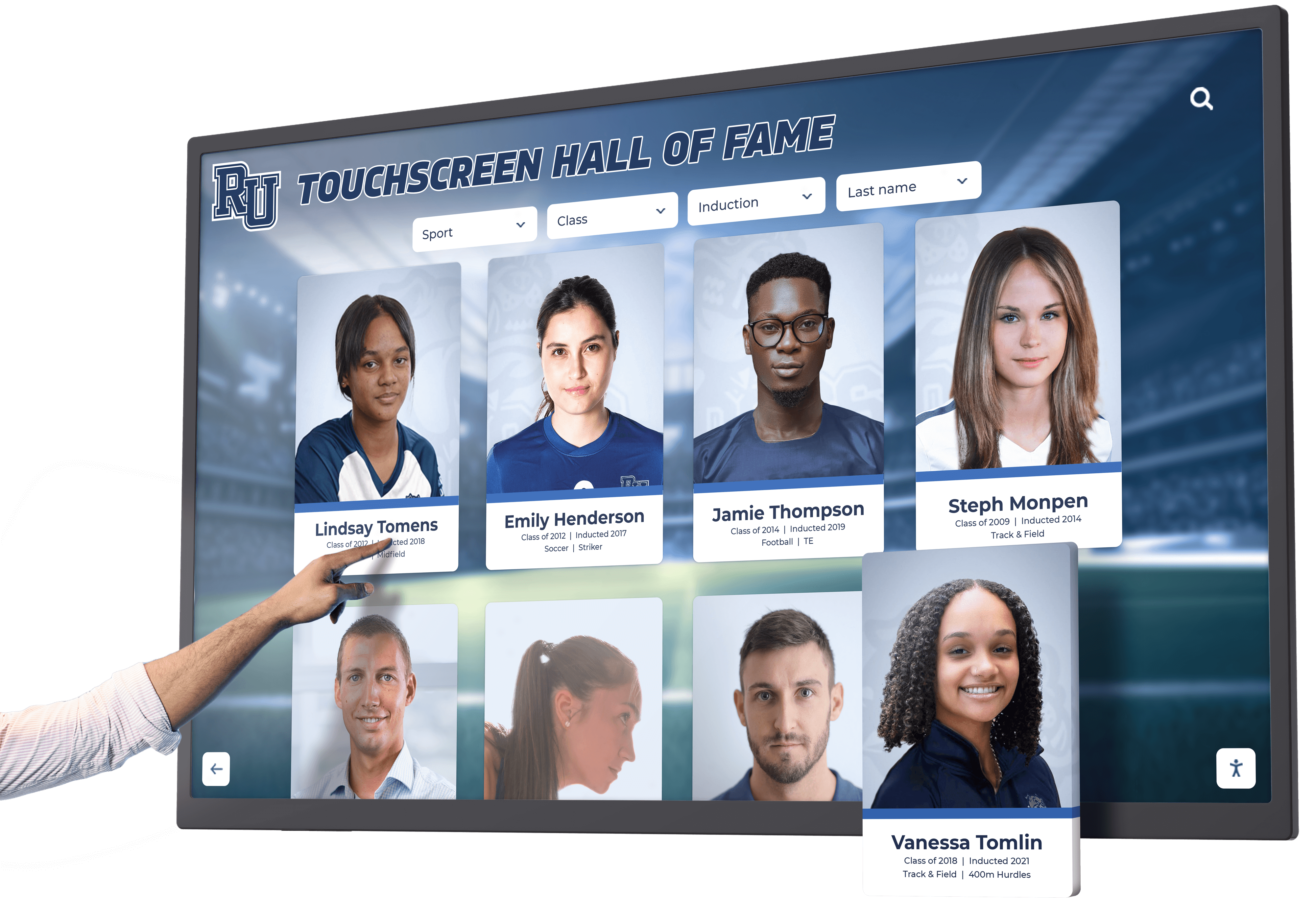
Virtual Facility Tours and Remote Evaluation
Not all recruiting relationships require physical coach visits. Digital tools extend your program’s reach to coaches who may never visit campus.
Online Facility Showcases: Professional virtual tours enable college coaches to explore your facilities remotely. Include gymnasium walk-throughs, training facility views, locker room tours, and digital recognition display demonstrations. These virtual experiences help coaches understand your program environment even when distance prevents physical visits.
Accessible Achievement Archives: Web-based athlete recognition platforms extend beyond physical displays, allowing college coaches anywhere to explore your program history, review current athlete profiles, and assess whether your program consistently develops college-level talent.
Social Media Integration: Digital recognition content provides regular social media material. When you share achievement highlights, record-breaking performances, and college signing celebrations, you maintain visibility with college coaches who follow your program digitally.
Organizing High School Showcase Events
As individual school visits decline, collective showcase events have emerged as effective alternatives that benefit athletes, high schools, and college coaches simultaneously.
Planning Effective Showcase Days
Successful showcase events require careful organization addressing logistics for dozens of athletes and multiple college coaches.
Collaborative Organization: Many effective showcases involve cooperation across multiple schools—often organized by athletic conferences, booster organizations, or regional athletic associations. Shared planning distributes workload while creating larger events attracting more college coaches.
Sport-Specific Structure: Organize showcases around specific sports or position groups. Football showcases might focus on skill position athletes one day and linemen another. Basketball showcases could separate by position or class year. Specialization ensures coaches evaluating specific positions find concentrated talent pools worth their time investment.
Efficient Scheduling: Design showcase formats enabling coaches to evaluate maximum athletes in minimum time. Consider stations where athletes rotate through position-specific drills, timed skill assessments providing objective measurements, competitive situations showcasing decision-making and game performance, and brief individual interviews allowing coaches to assess communication skills.
Coach Recruitment and Attendance
Showcase success depends on attracting college coaches across competition levels—from Division I programs to NAIA institutions.
Personal Invitations: Athletic directors with existing relationships should personally invite coaches they’ve worked with previously. Personal invitations demonstrate that specific athletes they might be interested in will attend.
Program-Level Outreach: Contact coaching staffs at programs where you’ve previously placed athletes. Coaches who’ve successfully recruited from your area are more likely to attend future events.
Multi-Level Representation: Ensure showcase marketing reaches coaches at all competition levels. Not every athlete will compete Division I, so NAIA, Division III, and junior college representation provides opportunities for all athletes regardless of division level.
Registration Systems: Implement coach registration requiring advance RSVP. Registration provides attendance numbers for planning while allowing communication of schedule details, participant lists, and logistical information before events occur.
Preparing Student-Athletes for Coach Interactions
Student-athletes must understand how to present themselves professionally during coach visits and recruiting interactions.
Communication Skills Development
Many talented athletes lack experience communicating with adult authority figures outside their normal coaching relationships. Preparation prevents awkward interactions that might negatively impact recruiting prospects.
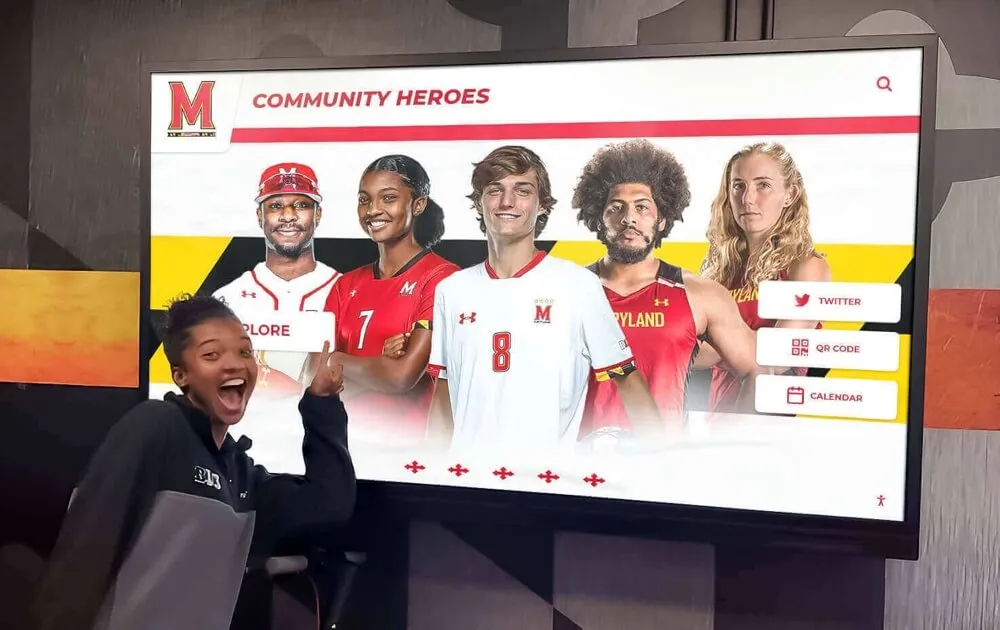
Mock Interview Practice: Conduct practice interview sessions where athletes respond to common coach questions about athletic background and development, academic interests and career goals, understanding of college athletics’ demands, reasons for interest in specific programs, and questions athletes have for coaches.
Professional Presentation: Coach athletes on professional demeanor during recruiting interactions including making eye contact during conversations, offering firm handshakes, speaking clearly and confidently, demonstrating genuine interest through questions, and following up with thank-you communications.
Authenticity Emphasis: While coaching professional behavior, stress authenticity importance. Coaches can detect when athletes present false personas. Genuine personalities and honest communication serve athletes better than rehearsed responses disconnected from reality.
Academic Preparation and Eligibility
Athletic talent alone doesn’t secure college opportunities. Academic eligibility requirements determine which athletes can compete collegiately.
NCAA Eligibility Understanding: Ensure athletes understand basic NCAA eligibility requirements including core course requirements and GPA minimums, standardized test score expectations, amateur status maintenance rules, and recruiting communication regulations.
Academic Performance Monitoring: Track athlete academic performance proactively. Coaches recruiting athletes need confidence that prospects will qualify academically. Strong academic profiles expand scholarship opportunities and program options.
Standardized Test Preparation: Many athletes need standardized test preparation to achieve scores meeting scholarship requirements. Schools should facilitate ACT/SAT prep resources helping athletes maximize test performance.
Addressing Common Coach Visit Challenges
Even well-prepared programs encounter obstacles during college coach recruiting relationships.
Limited Coach Availability and Declining Visits
As discussed earlier, fewer coaches visit individual schools than in previous decades. Schools must adapt to this reality.
Proactive Outreach: Rather than waiting for coaches to request visits, athletic directors should proactively contact college coaches about athletes who might fit their programs. Share highlight video links, academic profiles, and invitation for coach visits or video calls.
Regional Collaboration: Work with neighboring schools to organize collective coach visit days where multiple schools’ athletes are available. Coaches more willingly invest time visiting regions when they can evaluate prospects from multiple schools in single trips.
Leverage Technology: When in-person visits aren’t possible, facilitate virtual meetings via video conference. While not ideal substitutes for in-person evaluation, video calls enable coaches to interact with athletes and families when travel isn’t feasible.
Balancing Athletic and Academic Commitments
Coach visits and recruiting processes consume significant time for student-athletes already balancing demanding schedules.
Scheduling Coordination: When possible, schedule coach visits during non-academic times—lunch periods, after school, or during free periods. Minimize academic disruption while accommodating coach schedules.
Prioritization Guidance: Help athletes prioritize among multiple recruiting opportunities. Not every camp invitation or unofficial visit opportunity warrants attendance. Focus on programs representing genuine fits athletically and academically.
Academic Support: Ensure athletes involved in intensive recruiting processes receive academic support maintaining grade eligibility. Tutoring, study hall access, and teacher communication help students balance recruiting demands with academic requirements.
Building a Sustainable Recruiting Program
Individual successful recruiting outcomes are valuable, but systematic approaches create sustained success benefiting student-athletes year after year.
Documentation and Knowledge Transfer
Staff turnover can disrupt recruiting relationships built over years. Systematic documentation preserves institutional knowledge.
College Contact Database: Maintain comprehensive database of college coaches including contact information, athletes previously recruited to their programs, sports and positions they recruit, geographic recruiting territories, and history of campus visits and communications.
Recruiting Process Documentation: Document successful recruiting strategies, effective showcase event formats, coach communication best practices, and athlete preparation approaches. Written documentation enables new staff to maintain program effectiveness during transitions.
Alumni Network Engagement: Former athletes competing in college can serve as ambassadors and recruiting resources. Maintain relationships with alumni athletes who can provide insights about their college programs, connect current prospects with college coaches, and offer mentorship to younger athletes navigating recruiting.
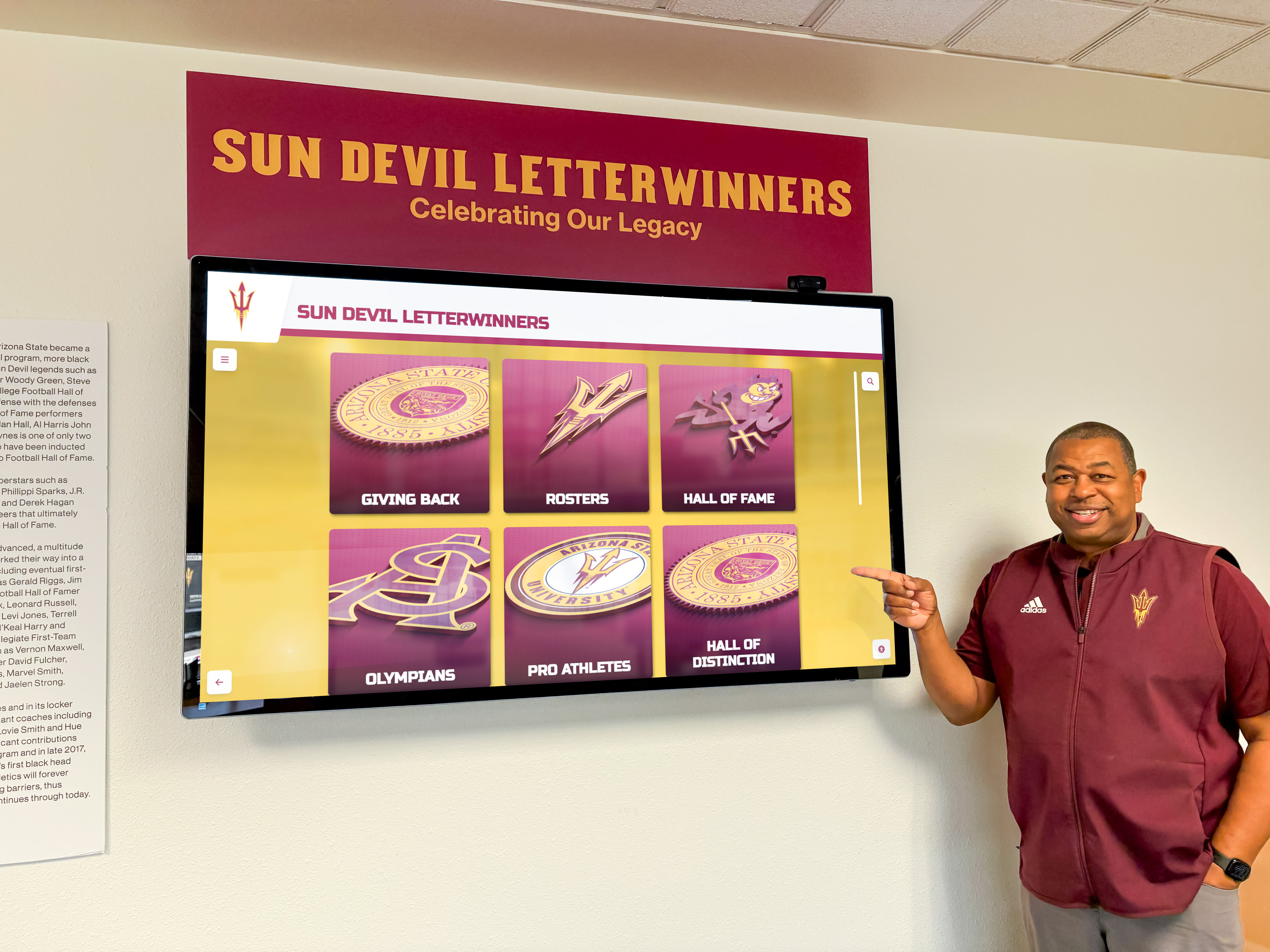
Continuous Program Enhancement
The most successful high school athletic programs continuously evolve recruiting capabilities.
Annual Review Process: Each year, assess recruiting program effectiveness through metrics including number of athletes signing collegiate opportunities, scholarship dollars earned by student-athletes, diversity of college programs recruiting from your school, college coach visits and showcase event attendance, and athlete feedback about recruiting preparation and support.
Competitive Analysis: Understand what competing high schools do effectively in recruiting. Attend their showcase events, review their digital presence, and identify approaches worth adapting to your context.
Professional Development: Athletic directors and coaches should pursue professional development in recruiting strategy through conference attendance, coaching association resources, NCAA compliance education, and networking with peers at successful recruiting programs.
Investment in Recruiting Infrastructure
Recruiting success requires resource investment—in facilities, technology, staff time, and recognition systems.
Facility Enhancements: Modern, well-maintained athletic facilities attract college coaches while demonstrating institutional commitment. Prioritize improvements that enhance coach visit experiences—updated meeting spaces, quality video equipment, and professional presentation areas.
Recognition Systems: Comprehensive athletic history displays documenting program success serve dual purposes—honoring achievement while demonstrating recruiting track record to college coaches. Solutions like Rocket Alumni Solutions provide purpose-built platforms enabling schools to showcase athletic heritage and college placement success comprehensively.
Staff Support: Consider whether athletic department structure adequately supports recruiting. Some schools designate recruiting coordinators, student workers assist with video editing and profile development, or administrative staff manage coach communications and visit scheduling.
Conclusion: Creating a College Recruiting Culture
Successful high school athletic recruiting transcends individual coach visits or single-season outcomes. It requires building comprehensive programs that systematically prepare student-athletes for collegiate opportunities, maintain productive relationships with college coaches across divisions and sports, showcase program quality through impressive facilities and recognition, and adapt to evolving recruiting landscape changes.
As traditional college coach school visits decline due to transfer portal emphasis and showcase event concentration, high schools must proactively create recruiting opportunities through organized collective events, enhanced digital presence, and maintained coaching relationships. The programs that thrive in this environment are those that view recruiting not as occasional activities but as fundamental program components deserving strategic attention and resource investment.
Digital recognition technology plays an increasingly important role in this landscape. Interactive displays documenting program history, showcasing college placements, and celebrating athletic achievement serve dual purposes—honoring student-athletes while demonstrating program quality to college coaches evaluating whether your school consistently develops college-ready talent.
Whether your program sends dozens of athletes to college programs annually or celebrates occasional collegiate commitments, systematic approaches to college coach relationships, athlete preparation, and program presentation create better outcomes for student-athletes pursuing athletic dreams beyond high school.
Ready to enhance your athletic recruiting program? Discover how solutions like Rocket Alumni Solutions help schools create professional recognition displays that showcase athletic achievement, document college placement success, and demonstrate program quality to visiting college coaches. These comprehensive platforms combine physical touchscreen installations with web-based accessibility, enabling your program to present its athletic heritage and recruiting track record impressively to coaches whether they visit campus or evaluate remotely.
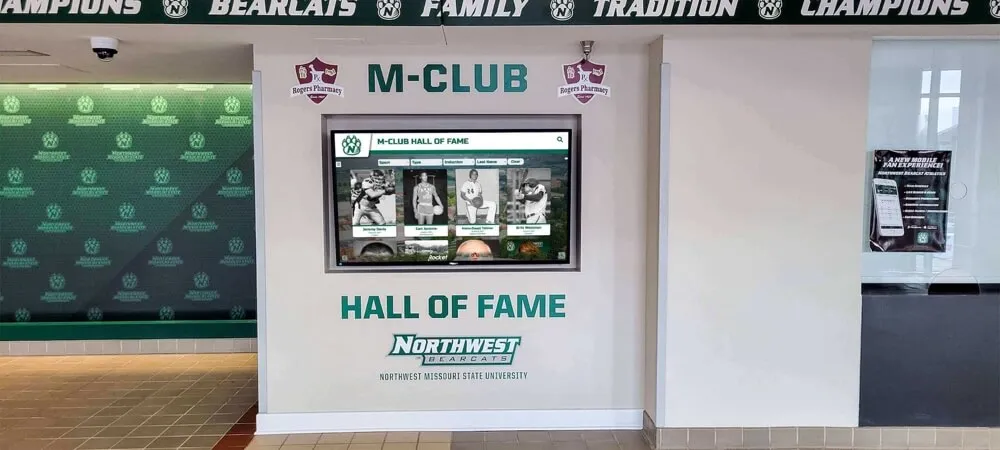
The most successful high school athletic programs understand that every interaction with college coaches—whether physical campus visits, showcase event attendance, or digital communication—represents opportunities to advocate for student-athletes while building relationships benefiting future recruiting classes. By investing in recruiting infrastructure, preparing athletes comprehensively, maintaining professional facilities and recognition systems, and adapting to evolving recruiting dynamics, high schools create environments where student-athletes receive maximum support pursuing collegiate athletic dreams while college coaches consistently find the talent they seek.
